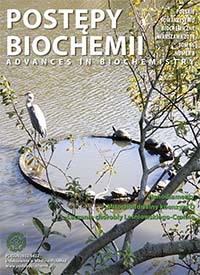Mechanisms of spliceosomal introns loss and gain
DOI:
https://doi.org/10.18388/pb.2019_292Abstract
Introns are non-coding sequences within the genes. They seemed to be just "junk" DNA, although currently are considered as important genetic elements influencing the genome functions, as they increase the diversity of transcriptome and proteome, perform regulatory activities in the cell, affect gene expression, mRNA processing, degradation and translation. Based on the mechanism of their excision, introns were classified into three main categories: spliceosomal, self-splicing and tRNA introns. Spliceosomal introns are unique for eukaryotic organisms. Sequence analyses of orthologous genes in different groups of eukaryotes revealed many cases of intron gains and losses due to the multiple mechanisms. Some of these events took place in the distant past, while others happened relatively recently. It is believed that these processes can act as one of the forces driving the evolution of eukaryotic genes.
Downloads
Published
Issue
Section
License
All journal contents are distributed under the Creative Commons Attribution-ShareAlike 4.0 International (CC BY-SA 4.0) license. Everybody may use the content following terms: Attribution — You must give appropriate credit, provide a link to the license, and indicate if changes were made, ShareAlike — If you remix, transform, or build upon the material, you must distribute your contributions under the same license as the original. There are no additional restrictions — You may not apply legal terms or technological measures that legally restrict others from doing anything the license permits.
Copyright for all published papers © stays with the authors.
Copyright for the journal: © Polish Biochemical Society.




